
It’s that wonderful time of year again when the Harvest Moon teeters on the horizon at sunset. You can watch the big orange globe rise on Friday (Sept. 16) from your home or favorite open vista just as soon as the Sun goes down. Despite being one of the most common sky events, a Full Moon rise still touches our hearts and minds every time. No matter how long I live, there will never be enough of them.
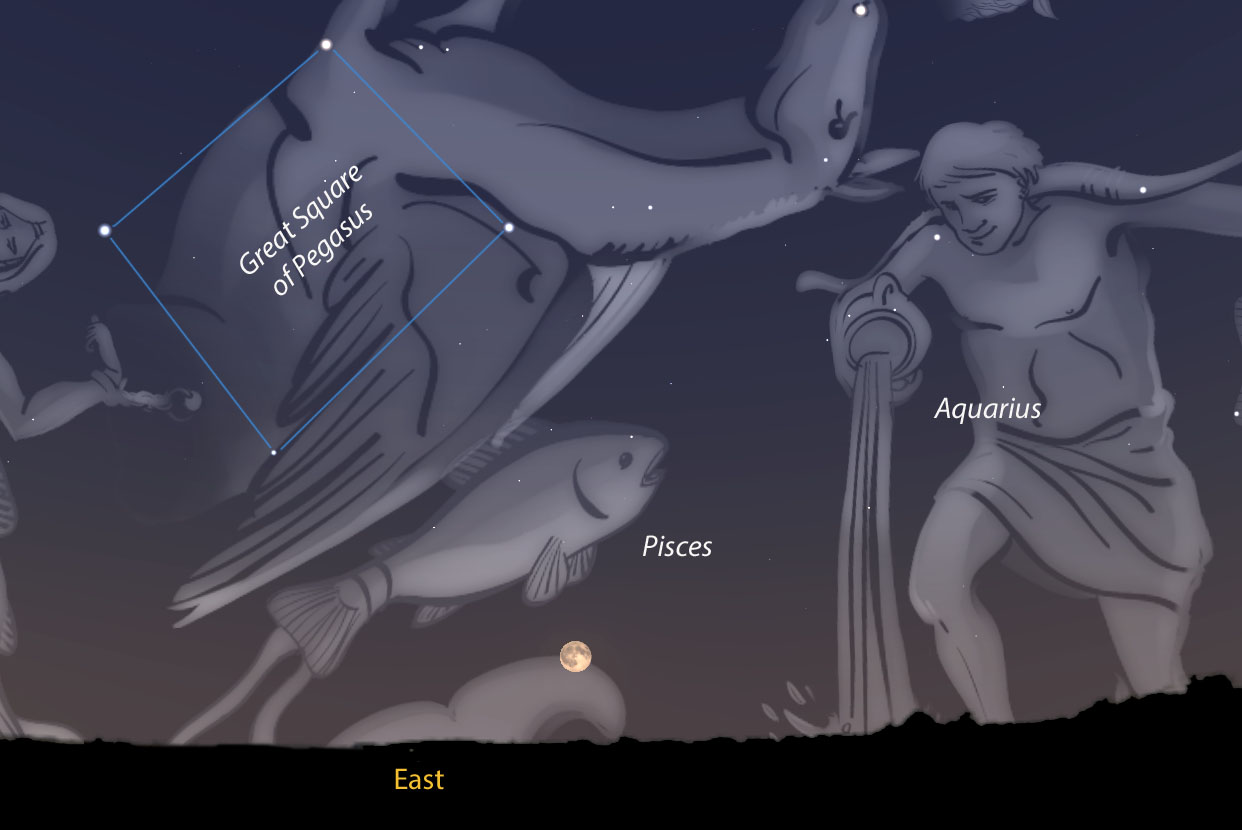
To see a moonrise, the most important information you need is the time the moon pops up for your city, which you’ll find by using this Moonrise and Moonset calculator. Once you know when our neighborly night light rises, pre-arrange a spot you can walk or drive to 10-15 minutes beforehand. The waiting is fun. Who will see it first? I’ll often expect to see the Moon at a certain point along the horizon then be surprised it’s over there.
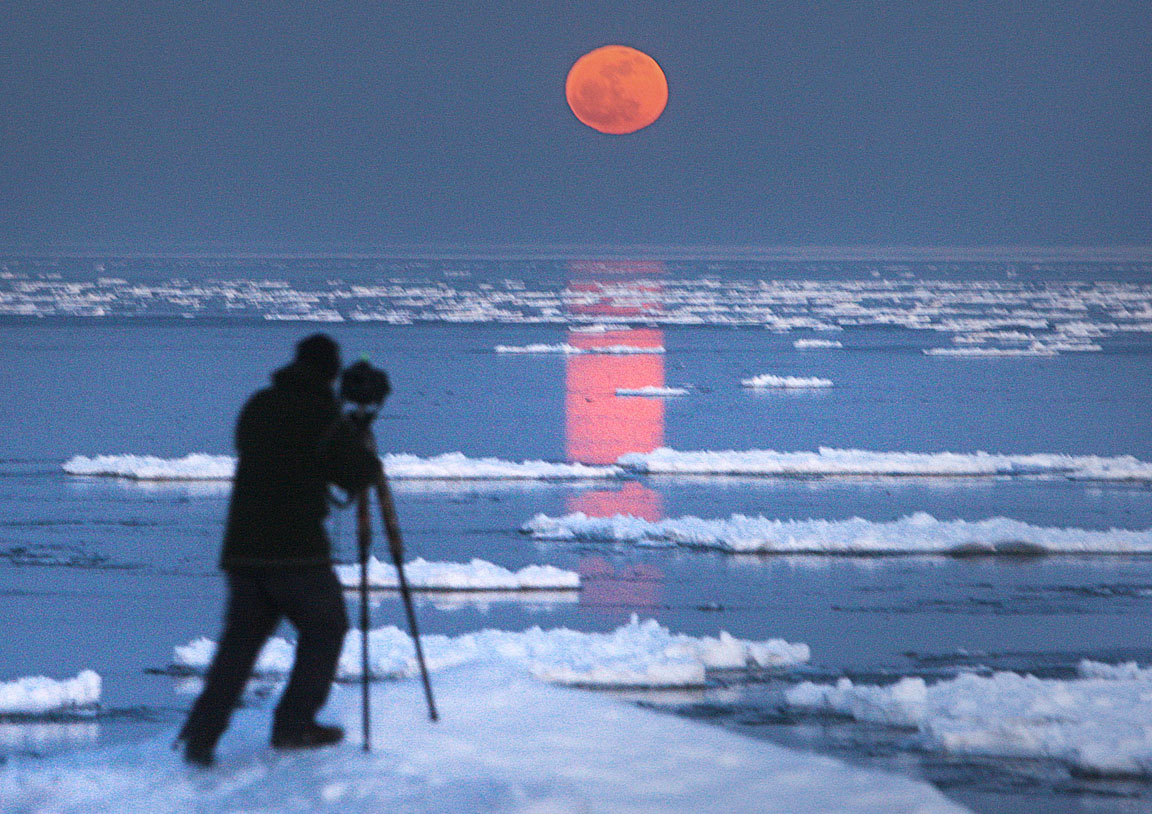
Depending on how low to the horizon you can see, it’s possible, especially over water, to catch the first glimpse of lunar limb breaching the horizon. This still can be a tricky feat because the Moon is pale, and when it rises, shows little contrast against the still-bright sky. Since the Moon moves about one outstretched fist to the east (left in the northern hemisphere) each night, if you wait until one night after full phase, the Moon will rise in a much darker sky and appear in more dramatic contrast against the sky background.
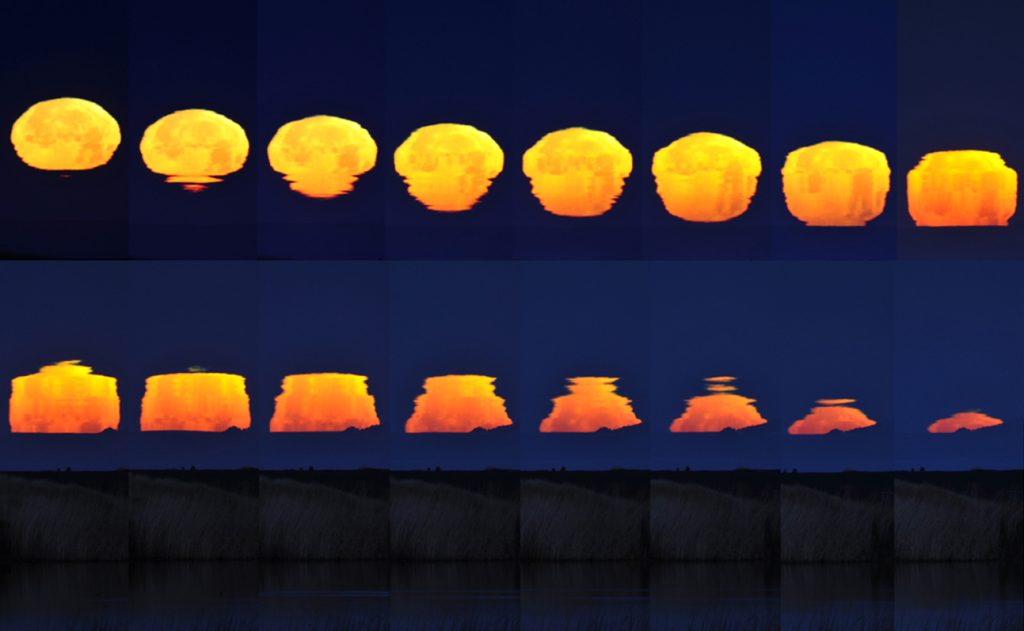
Look closely at the rising Moon with both naked eye and binoculars and you might just see a bit of atmospheric sorcery at work. Refraction, illustrated the icy moonrise image above, is the big one. It creates the squashed Moon shape. But more subtle things are happening that depend on how turbulent or calm the air is along your line of sight to our satellite.
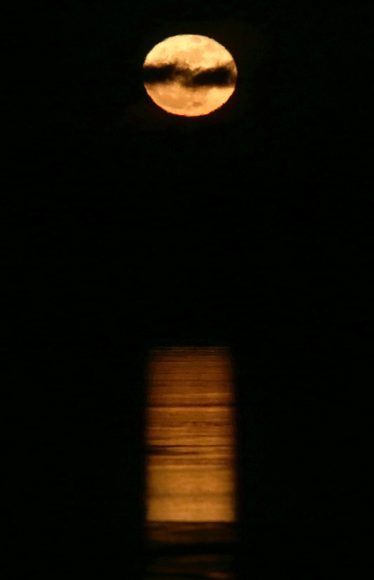
Rippling waves “sizzling” around the lunar circumference can be striking in binoculars though the effect is quite subtle with the naked eye. Much easier to see without any optical aid are the weird shapes the Moon can assume depending upon the state of the atmosphere. It can looked stretched out like a hot air balloon, choppy with a step-like outline around its bottom or top, square, split into two moons or even resemble a “mushroom cloud”.
If you make a point to watch moonrises regularly, you’ll become acquainted as much with Earth’s atmosphere as with the alien beauty of our sole satellite.
This Full Moon is special in at least two ways. First, it will undergo a penumbral eclipse for skywatchers across eastern Europe, Africa, Asia and Australia. Observers there should watch a dusky gray shading over the upper or northern half of the Moon around the time of maximum eclipse. The link will take you to Dave Dickinson’s excellent article that appeared earlier here at Universe Today.
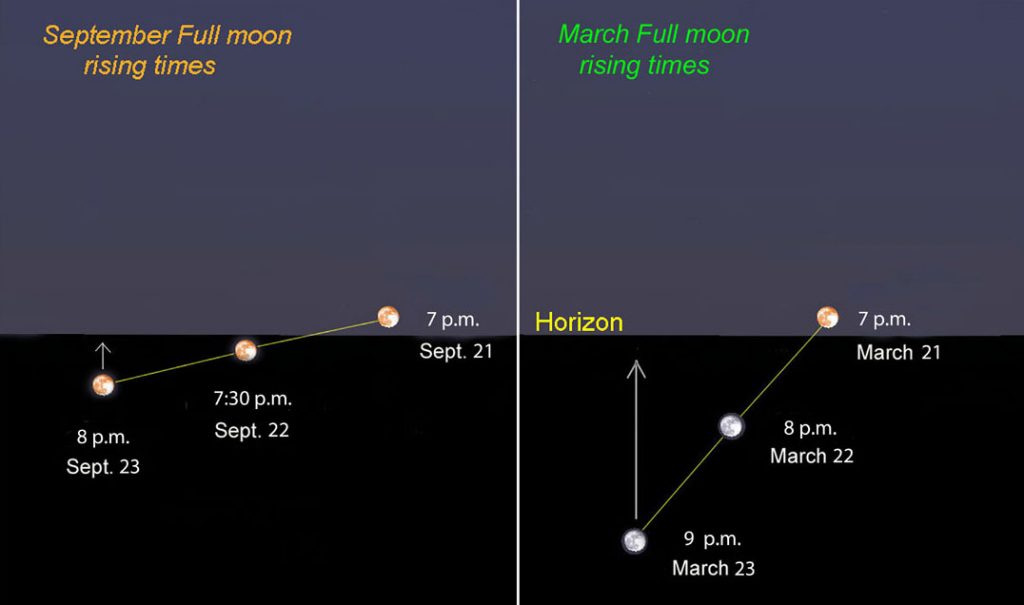
In the northern hemisphere, September’s Full Moon is named the Harvest Moon, defined as the Full Moon closest to the autumnal equinox, which occurs at 9:21 a.m. CDT (14:21 UT) on the 22nd. Normally, the Moon rises on average about 50 minutes later each night as it moves eastward along its orbit. But at Harvest Moon, successive moonrises are separated by a half-hour or less as viewed from mid-northern latitudes. The short gap of time between between bright risings gave farmers in the days before electricity extra light to harvest their crops, hence the name.
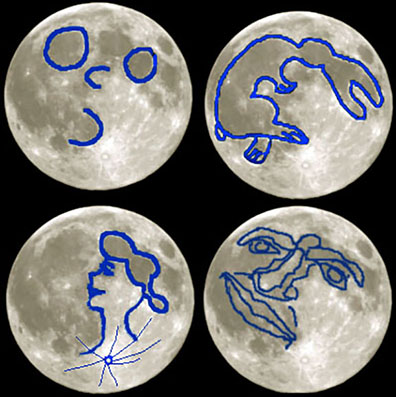
Why the faster-than-usual moonrises? Every September, the Full Moon’s nightly travels occur at a shallow angle to the horizon; as the moon scoots eastward, it’s also moving northward this time of year as shown in the illustration above. The northern and eastward motions combine to make the Moon’s path nearly level to the horizon. For several nights in a row, it only takes a half-hour for the Earth’s rotation to carry the Moon up from below the horizon. In spring, the angle is steep because the Moon is then moving quickly southward along or near the ecliptic, the path it takes around the sky. Rising times can exceed an hour.
As you gaze at the Moon over the next several nights, take in the contrast between its ancient crust, called the lunar highlands, and the darker seas (also known as maria, pronounced MAH-ree-uh). The crust appears white because it’s rich in calcium and aluminum, while the maria are slightly more recent basaltic lava flows rich in iron, which lends them a darker tone. Thanks to these two different types of terrain it’s easy to picture a male or female face or rabbit or anything your imagination desires.
Happy moongazing!

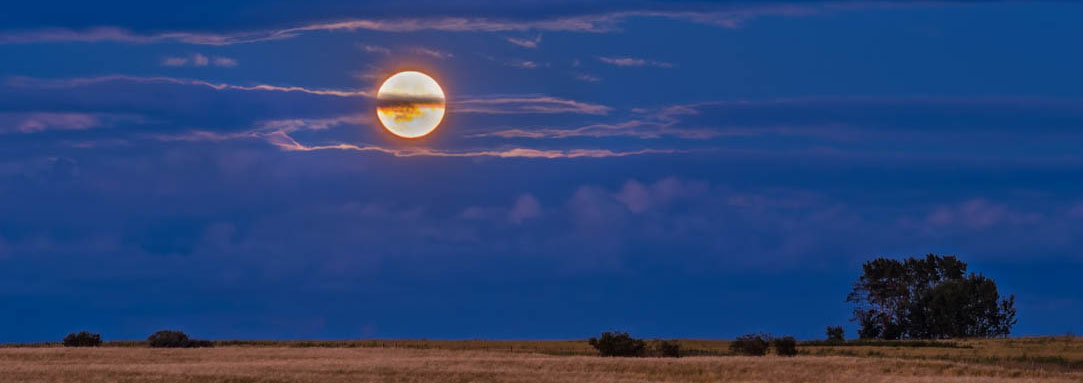
Firstly, I think the diagram is confusing. Does the line represent the orbital path of the Moon, or the angle it moves wrt the horizon? What do those times represent? And, the nodes of the Moon’s orbit precess, so 9 years later won’t the Moon be travelling south in September, not north? I’m confused.
Hi Gus,
The line represents the moon’s path through the sky which is also its orbital path. That orbital path, as the article describes, hits the horizon at a shallow angle in the fall and a steep angle in the spring as seen from the northern hemisphere. The nodal precession does not affect the moon’s primary direction. That’s based on where it is in relation to the sun. The full moon in September is always opposite the sun just as all full moons are. In the fall, the sun is rapidly moving south along the ecliptic and dropping lower in the sky. Meanwhile, the full moon – opposite the sun – must necessarily travel north along or near the ecliptic. It happens that in September and to some extent October, its north plus east movement causes it to approach the horizon at much shallower angle compared to that of spring, when it’s rapidly moving SOUTH along the ecliptic. Let me know if helps you understand the concept better.
Hi Bob, thank you for responding.
Trying to visualise the orbital mechanics of the Earth-Moon system is mind bending. However, if the Moon is at its ascending node for this equinox, and moving north across the ecliptic, in about nine years time it will be at the descending node and definitely crossing it moving south relative to the sun. Maybe I’m missing something. But perhaps this just causes a lessening of the effect as the inclination is only 5°.
Anyway, this is one of those eclipses that will be virtually invisible from here, but definitely would be worth the trip to see from the moon. Must be quite spectacular, with the Earth’s atmosphere backlit.
Regards
Andy
Gus, you nailed it! The effect is only a few degrees compared to the much bigger (and inexorable) southern movement of the moon along the ecliptic.
Ah, I think you mean Sun there 🙂
Anyway, the clouds cleared and I had a great view of the moon about one hour after maximum. To be honest, I thought it maybe looked a bit different from usual, the contrast between bright and dark areas perhaps more marked than usual, but hard to be sure and the London lights probably didn’t help.
Thank You for the article Bob
I see from the undated picture you took that the ice has made its seasonal return to the shores of the Duluth area so let me be the 1st to wish you “Bon Hiver” and may the polar bears surprise the next observer over 😎
Hi BC,
Thanks! Nice to hear from you. There’s always a chance for ice in the big lake between Dec. and May. That was taken on a pleasant May evening. Just kidding — a pleasant February evening.
At which longitude(s) and at what GMT time this is going to happen?
I live at 23°S and 19°E.
Yes, Tshakela, you should be able to see all of it. The times are approximately 1655UT(GMT) until 2055UT, but as it’s only a penumbral eclipse you will probably have the best chance to see something close to maximum eclipse at 1855UT. So you need to go out in the next couple of hours!
I hope you have clear skies. Here in london it’s still cloudy but clearing rapidly.